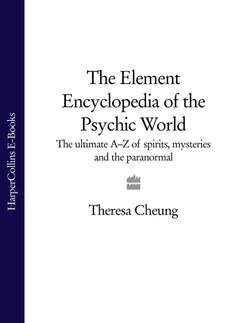Читать книгу The Element Encyclopedia of the Psychic World: The Ultimate A–Z of Spirits, Mysteries and the Paranormal - Theresa Cheung, Theresa Cheung - Страница 280
EAR of DIONYSIUS
ОглавлениеA famous example of mediumistic cross correspondences. In this case, a series of communications that needed to be brought together before they made sense.
A medium by the name of Mrs Willet first communicated the phrase ‘Ear of Dionysius’ when she went into a trance in August 1910. At the time the phrase meant nothing to the sitter, a Mrs Verrall, but her husband, the classical scholar A W Verrall, explained that the name was given to a huge abandoned quarry at Syracuse, which was roughly shaped like a donkey’s ear. In this place unhappy Athenian captives were confined from 405 to 367 BC and the peculiar acoustic properties of the cave were said to have enabled Dionysius the Tyrant to overhear his victims speaking.
There was no more talk of the Ear of Dionysius for several years until, in January 1914, Mrs Willet produced, during an automatic writing session, a script for Mrs Verrall that contained a passage referring to the Ear of Dionysius. The script was allegedly sent by Dr Verrall, who had died a year or so before. The Verralls were supporters of the Society for Psychical Research, which stressed the importance of private communications as evidence for life after death, so it seemed likely that Verrall would try to communicate his survival after death to his wife in this way.
For the next year Verrall, along with another communicator, S H Butcher, another dead classical scholar and a close friend of Verrall when they were both alive, reportedly began a series of communications to Mrs Willet that made allusions to Ulysses and Polyphemus. It wasn’t until August 1915, however, when a communication referred to a man called Philoxenus, who had been imprisoned for seducing Dionysius’s wife, that all the references eventually began to make sense. It seemed that a satirical poem of the passionate and tragic life of Philoxenus was being communicated, in which Philoxenus was portrayed as Ulysses and Dionysius as Polyphemus.
The Ear of Dionysius case is often held up as an example of cooperation between two dead communicators and proof of survival after death. Sceptics, however, argue that only one medium was involved, not several as is more usual in cross correspondence cases, and Mrs Willet could have discovered the knowledge for herself from university research libraries. It’s also possible she managed to learn the key points through ESP when Verrall was alive and unconsciously wove them into her trance communications.
